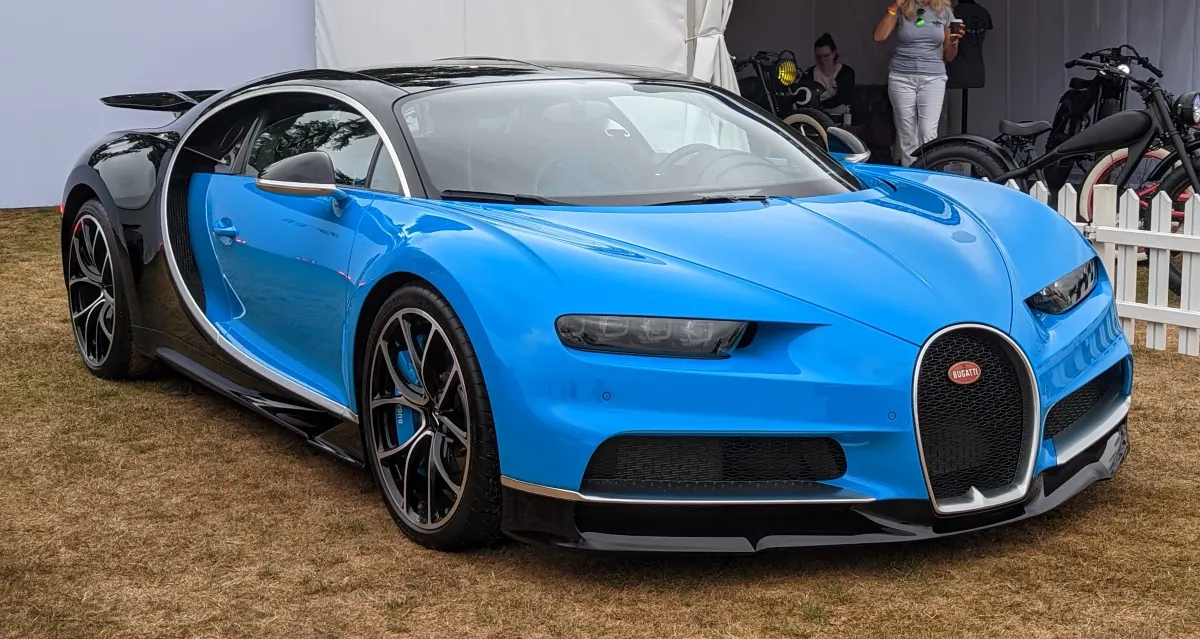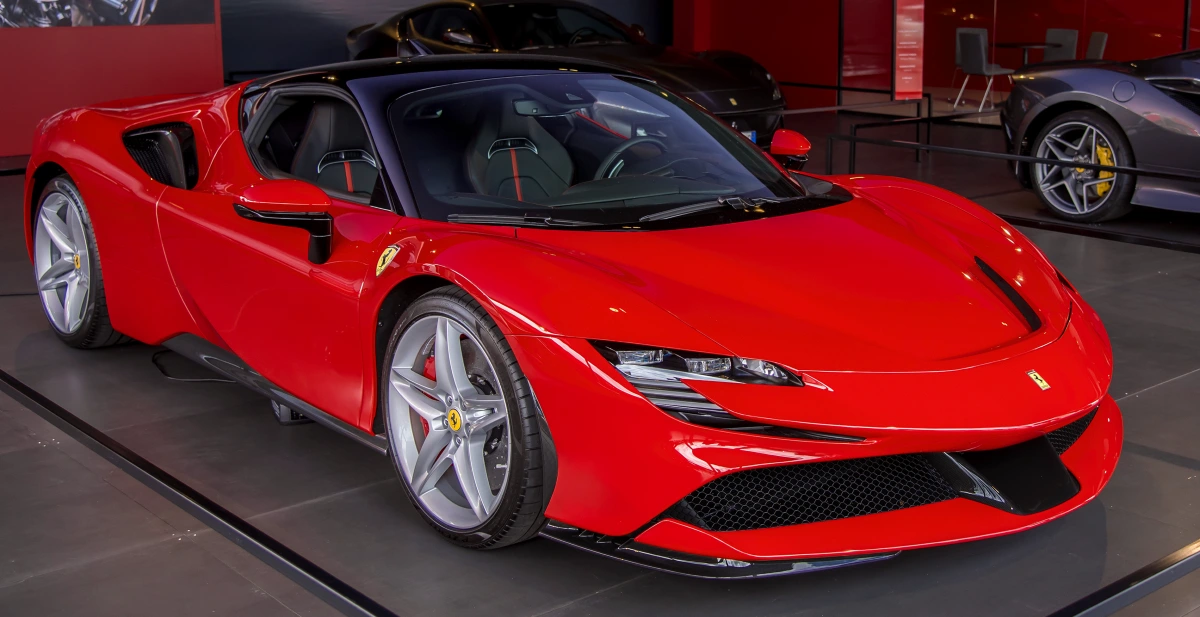Raw power, revolutionary engineering, and breathtaking design collide in today’s hypercar landscape. These automotive masterpieces push boundaries once thought impossible, shattering speed records while showcasing technological innovation that eventually trickles down to everyday vehicles.
From combustion engine pinnacles squeezing every last horsepower from fossil fuels to electric hypercars demonstrating the future of performance, each represents the absolute zenith of what’s possible when cost becomes no object.
Behind every curve, air intake, and carbon fiber panel lies countless hours of wind tunnel testing, computational analysis, and engineering brilliance. These aren’t just transportation—they’re rolling laboratories and automotive art that demonstrate human ingenuity at its finest.
1. Bugatti Chiron Super Sport 300+

The stunning engineering marvel from Bugatti broke barriers when it smashed the 300 mph threshold in 2019. With its sleek, elongated carbon fiber body and quad-turbo 8.0L W16 engine producing 1,578 horsepower, this hypercar stands as a monument to automotive excellence. Top speed? A blistering 304.77 mph.
What makes this vehicle extraordinary isn’t just raw power but how that power gets delivered—smooth, controlled, and with remarkable stability even at speeds most aircraft achieve during takeoff. Each of the 30 production models commands about $3.9 million, making it as exclusive as it is fast.
Owners receive not just a car but a masterpiece where every component, from the specially developed Michelin tires to the aerodynamically optimized exhaust system, works in harmony. The interior combines luxury with racing functionality through hand-stitched leather and precision instruments.
This machine represents the pinnacle of combustion engine technology in an era increasingly turning toward electrification.
2. Koenigsegg Jesko Absolut

Swedish automaker Koenigsegg created this speed demon with a single purpose: maximum velocity. The Jesko Absolut boasts a theoretical top speed approaching 330 mph, though this claim awaits official verification. Under its hood lurks a twin-turbo 5.0L V8 generating 1,600 horsepower on E85 biofuel. What truly separates this hypercar from competitors is its revolutionary nine-speed Light Speed Transmission, capable of changing between any gears instantaneously.
The aerodynamic profile features a dramatically low drag coefficient of just 0.278, achieved through countless wind tunnel tests and computational fluid dynamics simulations. Christian von Koenigsegg himself calls it “the fastest Koenigsegg ever made” and likely the fastest the company will ever produce.
Limited to just 125 units worldwide, each vehicle gets customized to its owner’s specifications. The attention to detail extends throughout, from the carbon fiber monocoque chassis to the active rear wing that provides both stability and downforce when needed.
3. SSC Tuatara

American manufacturer SSC North America challenged European dominance with their spectacular Tuatara. This hypercar claimed a controversial average speed of 316.11 mph in January 2021, though verification disputes led to subsequent retesting. The heart of this beast is a bespoke 5.9L twin-turbo flat-plane crank V8 producing an astonishing 1,750 horsepower on E85 fuel.
Astonishingly lightweight at just 2,750 pounds, the power-to-weight ratio approaches that of a Formula 1 car. The striking body design comes from Jason Castriota, known for his work with Ferrari and Maserati, featuring active aerodynamics that adapt to driving conditions.
Wind resistance becomes nearly nonexistent thanks to its 0.279 drag coefficient. Production remains extremely limited with only 100 planned examples, each priced around $1.9 million. SSC builds these machines in Washington state, representing American ingenuity at its finest.
Every component undergoes rigorous testing to ensure safety at extreme velocities where the slightest instability could prove catastrophic.
4. Rimac Nevera

Croatia brought forth an electric revolution in the form of the Nevera. This all-electric hypercar shattered expectations with four independent motors producing a combined 1,914 horsepower and 1,741 lb-ft of torque. Acceleration feels almost supernatural: 0-60 mph happens in just 1.85 seconds, making it among the quickest production cars ever created.
The massive 120 kWh battery provides around 340 miles of range while doubling as a structural element of the carbon fiber monocoque. Founded by Mate Rimac, the company represents a true rags-to-riches story in automotive innovation. The Nevera holds multiple acceleration records, including the quarter-mile time of 8.582 seconds.
Sophisticated torque vectoring technology allows precise power distribution to each wheel, creating handling characteristics that seem to defy physics. Only 150 examples will exist worldwide, each priced at approximately $2.4 million. The car demonstrates how electric powertrains can surpass traditional combustion engines in performance while maintaining practicality for grand touring with its substantial range.
5. Ferrari SF90 Stradale

Unlike its exclusively limited competitors, the SF90 Stradale brings hybrid hypercar technology to a slightly broader audience. Ferrari combined a twin-turbocharged 4.0L V8 with three electric motors to create their most powerful road car ever, delivering 986 combined horsepower.
The Italian masterpiece accelerates from 0-62 mph in just 2.5 seconds while maintaining the soul and character Ferrari enthusiasts demand. All-wheel drive comes courtesy of two front-mounted electric motors, while a third sits between the engine and the eight-speed dual-clutch transmission.
Drivers can select electric-only mode for about 16 miles of silent, zero-emission travel—something unthinkable in previous Ferrari generations. The cockpit features a fully digital interface with head-up display technology borrowed from Formula 1. While still exclusive, starting price around $625,000 makes it almost reasonable compared to others on this list.
Production numbers remain limited but not strictly capped. The SF90 represents Ferrari’s bridge between their storied combustion engine heritage and an electrified future, blending tradition with cutting-edge technology.
6. McLaren Speedtail

Flowing lines and teardrop silhouette mark this British beauty as something truly special. Just 106 examples exist worldwide, each fetching $2.25 million and selling out before production began. Beneath the streamlined body sits a hybrid powertrain combining a 4.0L twin-turbo V8 with electric assistance to deliver 1,055 horsepower. Zero to 186 mph happens in a mere 12.8 seconds.
Aerodynamic wizardry includes active ailerons that bend the carbon fiber bodywork itself, flexible rear flaps, and retractable digital mirrors. Front wheels wear static carbon fiber covers to smooth airflow. Inside, three seats position the driver centrally like the legendary McLaren F1, with passengers slightly behind on either side.
Every surface features exotic materials: aniline leather, carbon fiber, and electrochromic glass that darkens at the touch of a button. The Speedtail reaches 250 mph in “Velocity Mode,” which actually lowers the car’s ride height by 1.4 inches. This hyper-GT blends McLaren’s racing heritage with grand touring comfort for cross-continental journeys at breathtaking speeds.
7. Porsche 911 GT2 RS

Raw, unfiltered driving emotion comes alive in this track-focused 911 variant. Porsche engineers extracted 700 horsepower from a twin-turbocharged 3.8L flat-six mounted in the rear, sending all that fury to just the back wheels through a lightning-quick seven-speed PDK transmission. Weighing only 3,241 pounds, acceleration feels brutal: 0-60 mph in 2.7 seconds with a top speed of 211 mph.
Racing DNA is shown on the magnesium roof, carbon fiber hood, and titanium exhaust system. Giant carbon ceramic brakes haul this beast down from speed repeatedly without fade. Grip levels approach supernatural, with the Nürburgring lap time of 6:47.3 making it one of the quickest production cars ever around the famous German circuit.
Unlike most hypercars, prices started around $293,000—still expensive but almost reasonable in this company. Massive rear wing, aggressive splitter, and widened bodywork telegraph its intentions clearly. Nothing feels diluted or compromised; this machine exists solely to deliver driving thrills at their most intense and pure.
8. Aston Martin DBS Superleggera

British grand touring tradition meets supercar performance in this magnificent front-engine GT. A twin-turbocharged 5.2L V12 produces 715 horsepower with a tsunami of torque—663 lb-ft available from just 1,800 rpm. Carbon fiber bodywork wraps around a bonded aluminum structure, creating a vehicle both lighter and stronger than its predecessors.
Acceleration from standstill to 62 mph takes just 3.4 seconds, with 100 mph arriving in 6.4 seconds. Handling feels more nimble than the substantial size suggests, thanks to adaptive damping and a mechanical limited-slip differential. Advanced aerodynamics generate 397 pounds of downforce without spoiling the gorgeous lines penned by Marek Reichman.
Inside, Bridge of Weir leather covers nearly every surface not already adorned with carbon fiber or aluminum. Eight-way adjustable heated seats make long journeys comfortable while a 1,000-watt Bang & Olufsen sound system provides the soundtrack when the exhaust note isn’t center stage. Starting around $304,995, the DBS represents Aston Martin at its most potent and refined.
9. Lamborghini Sián FKP 37

Sant’Agata Bolognese birthed this raging bull as its first production hybrid. Limited to just 63 coupes and 19 roadsters, each sold for over $3.6 million and vanished from availability instantly. Traditional Lamborghini aggression gets amped up with impossibly sharp angles, hexagonal motifs, and Y-shaped headlights.
Power comes from a naturally aspirated 6.5L V12 paired with a 48-volt electric motor integrated into the transmission, delivering a combined 819 horsepower. Unlike conventional hybrids, a supercapacitor replaces traditional batteries, weighing less while delivering power ten times faster. Acceleration to 62 mph takes less than 2.8 seconds on the way to a top speed exceeding 217 mph.
Carbon fiber constructs most body panels, with active cooling vanes that react to temperature changes in the engine bay. The name honors late Volkswagen Group chairman Ferdinand Piëch (FKP) and means “lightning bolt” in Bolognese dialect. Each owner worked with Lamborghini’s Ad Personam customization program to create a truly unique specification for their Sián.
10. Pagani Huayra Roadster BC

Exquisite handcrafted details and obsessive engineering define this Italian masterpiece. Only 40 examples exist, each commanding $3.5 million. The Mercedes-AMG-sourced 6.0L twin-turbo V12 develops 791 horsepower and 774 lb-ft of torque, all in a package weighing just 2,756 pounds. Every component justifies its existence through function and beauty simultaneously.
Titanium fasteners, each etched with the Pagani logo, join carbon-titanium composite body panels developed specifically for this model. Six exhaust tips exit through the center of the rear diffuser, playing a mechanical symphony unlike anything else on the road.
Gullwing doors open to reveal an interior resembling fine jewelry more than an automobile cockpit. Leather, carbon fiber, and aluminum components get hand-assembled by artisans at the small factory in San Cesario sul Panaro. The seven-speed sequential gearbox snaps through shifts in milliseconds.
Pirelli developed bespoke P Zero Trofeo R tires specifically for this car, providing grip levels that challenge perception. Horacio Pagani’s creation represents automotive art at its finest.
11. Chevrolet Corvette ZR1

American muscle evolves into world-class performance with this front-engine Corvette swan song. Beneath the bulging hood sits a 6.2L supercharged V8 belting out 755 horsepower and 715 lb-ft of torque. You feel each explosion in the combustion chambers through your spine. Acceleration stats stun: 0-60 mph in 2.85 seconds and a quarter-mile demolished in 10.6 seconds.
Carbon fiber forms the hood, front splitter, side skirts, and massive rear wing, generating serious downforce. Handling approaches telepathic thanks to Magnetic Ride Control suspension that reads the road 1,000 times per second. Massive Michelin Pilot Sport Cup 2 tires stick to pavement with impressive tenacity.
The interior blends functionality with surprising comfort through Nappa leather and microsuede. Heat extraction openings in the carbon hood reveal glimpses of the supercharger below. Starting at $123,000, this ZR1 delivers hypercar performance at sports car prices.
Few sounds on earth match the thunderous bellow from its four-tip exhaust system. This Corvette marked the end of front-engine layout before the model’s revolutionary mid-engine transformation.
12. BMW M5 Competition

Subtle visual cues hide supercar capabilities within this everyday sedan. Four doors and a spacious trunk disguise a twin-turbocharged 4.4L V8 producing 617 horsepower and 553 lb-ft of torque. All that fury reaches pavement through an intelligent all-wheel-drive system with adjustable rear-wheel bias. Launch control catapults this 4,300-pound luxury sedan from standstill to 60 mph in just 3.1 seconds.
Carbon ceramic brakes (optional) stand ready to halt this German missile repeatedly without fade. Adaptive suspension reads road conditions continuously, balancing comfort with cornering capability. Black accents, quad exhausts, and special 20-inch wheels hint at performance potential. Inside, heated leather sport seats feature illuminated M logos while carbon fiber trim adorns the dashboard.
The infotainment system includes M-specific performance displays showing everything from boost pressure to g-forces. Starting around $111,000, this technological tour de force represents BMW’s mastery of combining everyday usability with extreme performance.
A dedicated “M” button on the steering wheel instantly recalls your preferred setup for engine, transmission, suspension, and stability control.
13. Lotus Evija

Norfolk’s electric hypercar revolution sports an otherworldly appearance straight from science fiction. Four electric motors—one per wheel—combine to unleash 1,972 horsepower and 1,254 lb-ft of torque. Brutally quick acceleration dispatches 0-62 mph in under 3 seconds, while 186 mph arrives in just 9 seconds. The 70 kWh battery provides around 250 miles of range and can accept an 800kW charge, restoring 80% capacity in just 12 minutes.
Venturi tunnels carved through the rear quarters create a visual signature unlike anything else on the road. Active aerodynamics adjust automatically based on driving conditions. The carbon fiber monocoque weighs just 284 pounds, contributing to the car’s approximately 3,700-pound total weight—remarkably light for an EV with such massive battery capacity.
Limited to 130 examples worldwide, each costs around $2.3 million. Magnesium wheels reduce unsprung mass while housing carbon ceramic brakes. Interior minimalism features exposed carbon fiber surfaces and a digital instrument cluster that displays only essential information. Lotus founder Colin Chapman’s “simplify, then add lightness” philosophy lives on even in the electric age.
14. Mercedes-AMG Project One

Formula 1 technology transforms into road-legal reality through this astonishing hypercar. The actual 1.6L turbocharged V6 engine from Lewis Hamilton’s championship-winning F1 car forms the heart of the powertrain, albeit slightly detuned for reliability. Four additional electric motors—one integrated with the turbocharger, one attached to the engine, and two driving the front wheels—contribute to a combined output exceeding 1,000 horsepower.
The combustion engine alone screams to 11,000 rpm. Push-rod suspension, carbon ceramic brakes, and active aerodynamics come straight from motorsport. Acceleration from 0-124 mph takes less than 6 seconds on the way to a top speed exceeding 217 mph. Carbon fiber constructs nearly every surface, keeping weight around 3,300 pounds despite complex hybrid systems.
The steering wheel borrows heavily from F1 design, featuring numerous controls and shift lights across the top edge. Production limited to 275 units, each costing approximately $2.7 million. Specialized technicians must service the engine every 31,000 miles, essentially rebuilding it to maintain performance. This represents the most direct translation of Formula 1 technology ever offered to the public.
15. Tesla Roadster (2022)

Staggering acceleration claims grab headlines for this upcoming all-electric sports car. Zero to 60 mph happens in a claimed 1.9 seconds, with 100 mph arriving in 4.2 seconds. The quarter-mile vanishes in 8.8 seconds. Three electric motors—one front, two rear—provide all-wheel drive and torque vectoring capability. Battery capacity of 200 kWh doubles what’s available in other Tesla models, providing over 600 miles of range. Top speed should exceed a very un-EV-like 250 mph.
Removable glass roof panels store in the trunk, offering open-air motoring without sacrificing the slippery 0.21 drag coefficient. Unlike most Teslas, this model incorporates traditional sports car proportions with short overhangs and dramatic curves. Four seats provide genuine practicality uncommon in the hypercar realm.
SpaceX option package promises cold gas thrusters for even quicker acceleration, potentially enabling limited hovering capability according to Elon Musk. Base price starts around $200,000 with the Founders Series commanding $250,000. The value proposition becomes clear when comparing performance metrics against traditional hypercars costing ten times as much. Production delays continue pushing its release further into the future.


